Newsletter Articles from 2008
As Yates Mill was restored, Yates Mill Associates published and mailed a paper newsletter to keep supporters informed of the progress and historical discoveries.
Here are some articles from 2008:
- History Revealed: Lea Family Lends Mill Artifacts to Park by Leslie Hawkins
- The Miller’s Corner – How Long Does a Millstone Last? by William Robbins
- The Miller’s Corner – Tools of the Trade: Jack Stick by William Robbins
- Millponds and the Environment by John Vandenbergh
- Grain Wagon Acquired and Moved to Park by Rebeccah Cope
- Early Land Grant and Mill Research by Rebeccah Cope
- The Miller’s Corner – Hopper Boy by William Robbins
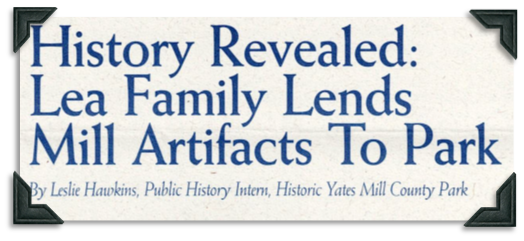
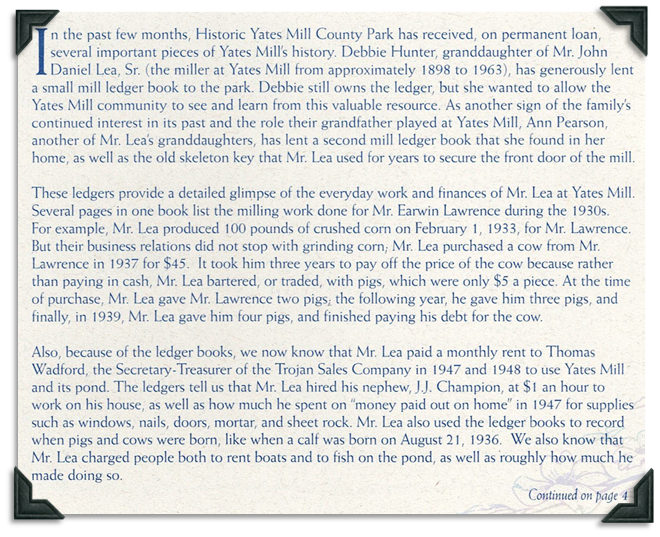
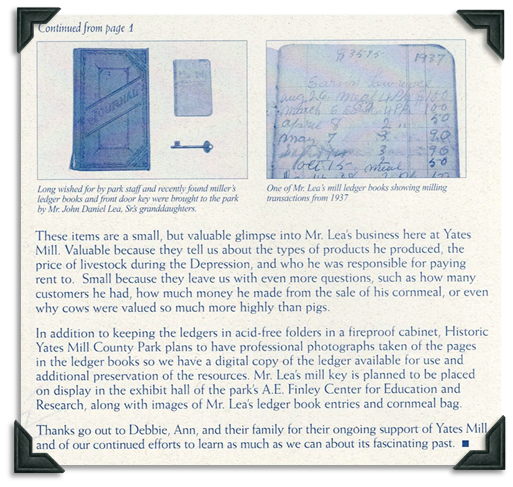

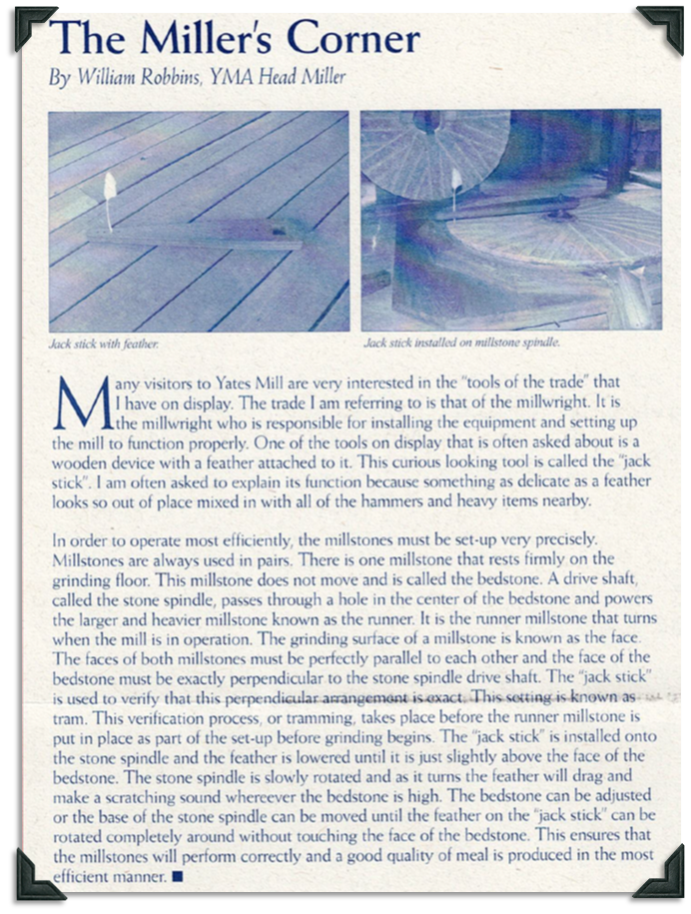
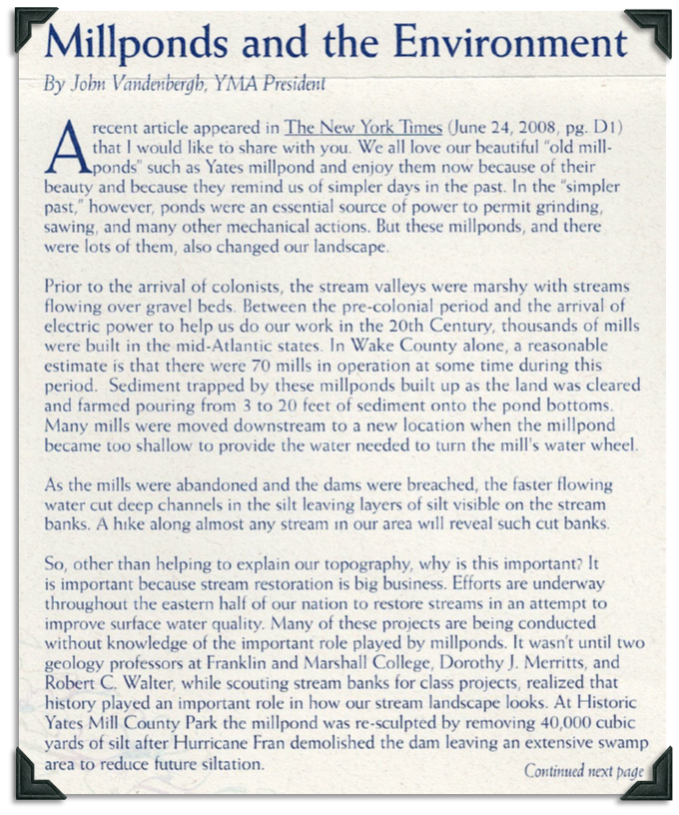 x
x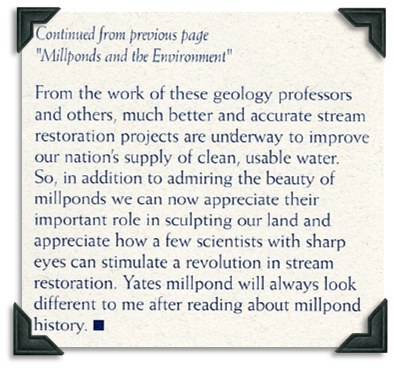


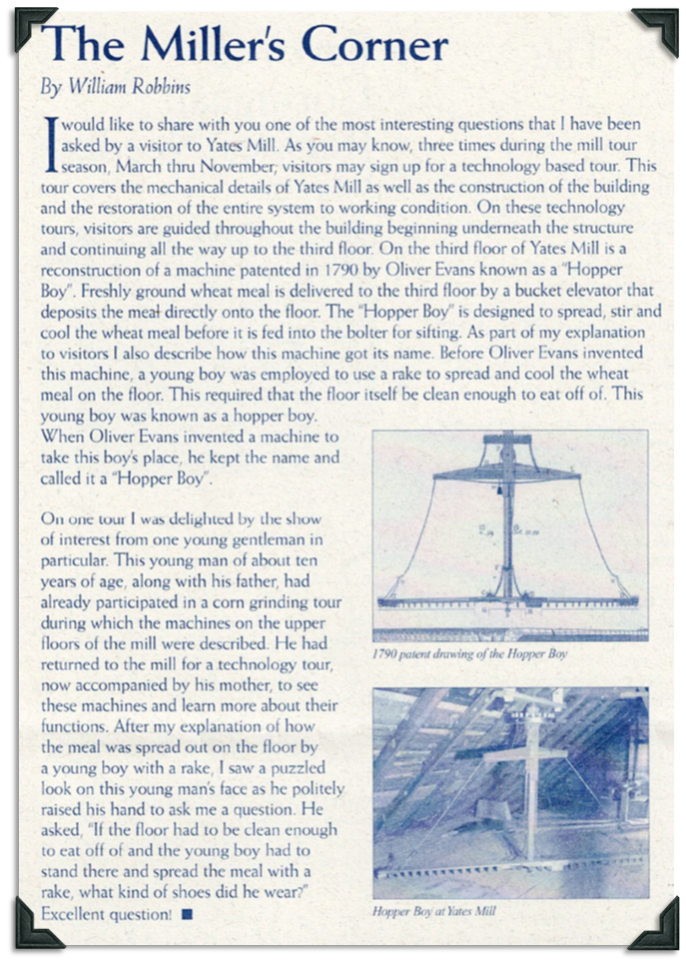
To see more information about the history of Yates Mill and the role Yates Mill Associates played in restoring the mill, visit the A.E. Finley Center at Historic Yates Mill County Park to see displays, view artifacts, and watch videos of the mill in action.
